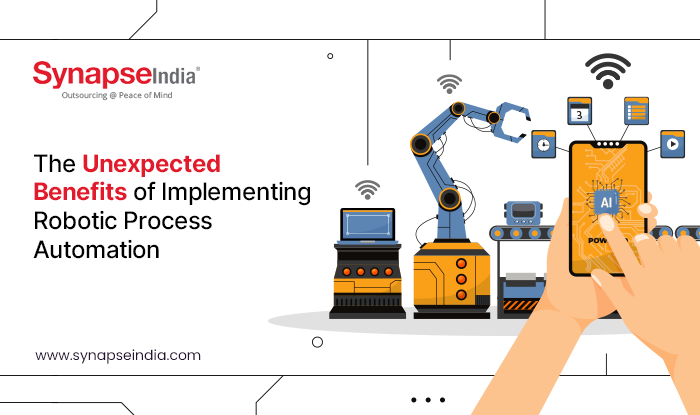 16 Jul 2024
16 Jul 2024“Robotic Process Automation (RPA) enables employees to focus on higher-value activities, improves data accuracy and compliance, speeds up time-to-market, offers scalability and flexibility, and enhances customer experience.”

A game-changing technology that is transforming company processes across industries is robotic process automation or RPA. Fundamentally, robotic process automation (RPA) uses software robots, or "bots," to automate repetitive, rule-based processes that are typically completed by people. To improve productivity, decrease human error, and expedite workflows, these bots imitate human operations within digital systems, such as accessing software applications, entering data, and doing computations.
We'll go over the foundations of RPA, its essential elements, and the advantages it provides to businesses in this overview. We'll also look at practical applications and illustrations of how RPA is being used in a variety of industries to spur innovation and add value. Regardless of your level of experience with RPA, this guide will give you important insights into the game-changing possibilities of robotic process automation.
Organizations looking to improve productivity, accelerate digital transformation, and streamline operations are finding that robotic process automation (RPA) is a potent tool. Organizations are finding a variety of unanticipated benefits from their RPA initiatives, even though automating repetitive operations and minimizing manual effort is frequently the main objective of deploying RPA. We'll look at a few of these unforeseen advantages and how they're changing how companies run in this piece.

Enhancing employee productivity is one of RPA's most notable unanticipated advantages. RPA frees up staff members to concentrate on higher-value jobs that call for creativity, problem-solving, and critical thinking by automating repetitive work. Employees can focus more on strategic goals, customer interaction, and innovation when repetitive jobs are delegated to bots. This increases work satisfaction and productivity overall.
RPA systems are designed to follow predefined rules and workflows with precision, which helps improve data accuracy and ensure compliance with regulatory requirements. By automating data entry, validation, and reconciliation processes, RPA minimizes the risk of errors and inconsistencies that can arise from manual data handling. This not only enhances data quality but also reduces the likelihood of compliance violations, audits, and associated penalties, providing organizations with greater peace of mind.
In today's fast-paced business environment, speed is often a critical factor in gaining a competitive edge. RPA accelerates time-to-market by streamlining processes, reducing cycle times, and eliminating bottlenecks in workflows. By automating tasks such as order processing, invoicing, and inventory management, organizations can deliver products and services to market more quickly, respond rapidly to changing customer demands, and capitalize on emerging opportunities.
Another unexpected benefit of RPA is its scalability and flexibility. RPA solutions are inherently scalable, allowing organizations to deploy bots across various departments, functions, and business units as needed. Whether automating a single process or orchestrating complex end-to-end workflows, RPA can scale up or down to accommodate changing business requirements and fluctuating workloads. Additionally, RPA platforms offer flexibility in terms of customization, integration with existing systems, and support for diverse use cases, making them adaptable to evolving business needs.
By streamlining processes, reducing errors, and accelerating response times, RPA contributes to an enhanced customer experience. Whether it's processing orders more efficiently, resolving customer inquiries faster, or personalizing interactions based on real-time data insights, RPA enables organizations to deliver superior service and support to their customers. This not only fosters customer loyalty and satisfaction but also drives revenue growth and strengthens brand reputation in the marketplace.
While the primary objective of implementing RPA may be to automate tasks and drive operational efficiency, organizations are discovering a wealth of unexpected benefits from their RPA initiatives. From improved productivity and data accuracy to faster time-to-market and enhanced customer experience, RPA is reshaping the way businesses operate and unlocking new opportunities for growth and innovation. As organizations continue to explore the potential of RPA, these unexpected benefits will play a crucial role in driving success and competitiveness in the digital age.

The emergence of RPA signifies a profound change in the way businesses handle process automation. RPA systems allow non-technical users to create, deploy, and manage automation workflows with little assistance from IT, in contrast to traditional automation solutions that call for substantial coding and customization. Business users may now drive digital transformation, streamline operations, and achieve new productivity levels thanks to the democratization of automation.


 09 Jan 2024
09 Jan 2024
